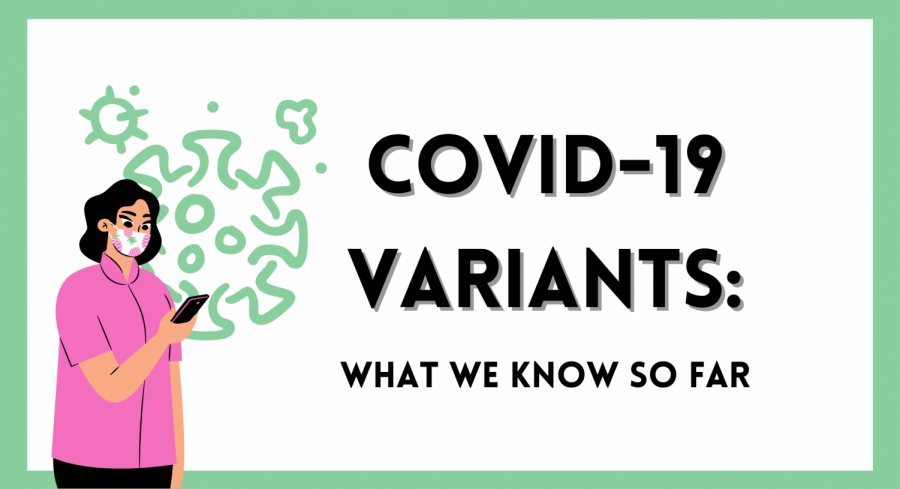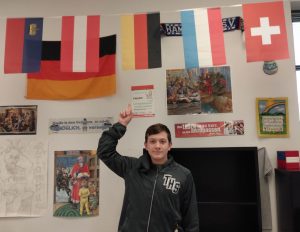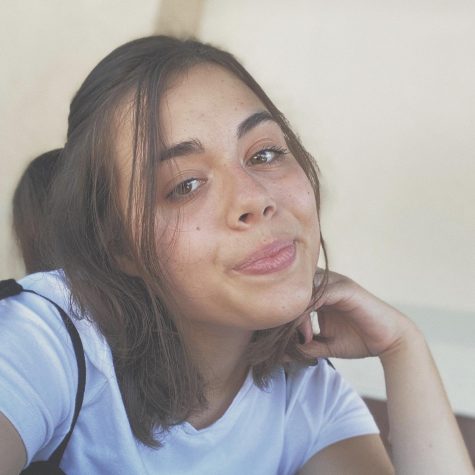Q&A: COVID-19 Variants
Scientists are concerned with three emerging mutated strains of the virus
Three new variants of the virus that causes COVID-19 have posed new questions regarding the course of the pandemic.
February 18, 2021
BREAKING Feb. 18- The Pfizer-BioNTech and Moderna vaccines have decreased effectiveness against B.1351, but are highly effective against B.1.17. Both developers plan to update the vaccines to protect against the new variants.
At almost a year into the pandemic, most people yearn for an end to COVID-19. The introduction of vaccines and continuation of social distancing measures over the past three months have shown promise in decreasing the rate of spread. However, the introduction of new COVID-19 variants poses new questions to the course of the pandemic.
As a virus becomes more widespread, it mutates, or changes, and creates new variants. SARS-CoV-2, the virus that causes COVID-19, is no exception. Scientists are mainly concerned with three variants of the virus: B.1.1.7, B.1.351 and P.1.
Below are commonly asked questions regarding the new variants. This page will be updated as new information emerges:
How did COVID-19 originally develop?
COVID-19 is a disease caused by the virus SARS-CoV-2 (severe acute respiratory syndrome coronavirus 2). The first case was discovered in Wuhan, China in Dec. 2019.
Where were the first recorded cases of the new variants?
The B.1.1.7 strain emerged in the United Kingdom in late fall of 2020.
B.1.351 emerged in South Africa in Oct. 2020
P.1 emerged in Brazil in mid-December of 2020.
When did they reach the U.S.?
B.1.1.7 was first detected in the U.S in December of 2020. B.1.351 and P.1 were detected in January.
How many cases caused by variants are there in the U.S.?
B.1.17 is most prevalent, with 1881 cases currently reported across 45 states. This variant is most likely to become widespread in the U.S., and is already the dominant cause of COVID-19 infections in other nations. There have been 46 cases caused by B.1.351 across 14 states and five cases caused by P.1 across four states. These numbers only represent the known cases caused by variants- not the total number of cases likely circulating in the U.S Click here for a map of current variant-caused cases.
Have they reached Missouri?
On Feb. 6, the first B.1.1.7 case in Missouri was reported in Kansas City. It is the only known variant case in Missouri so far.
What makes the variants different?
B.1.1.7 has a 50% higher rate of transmission, meaning it spreads from person to person much quicker.
Evidence suggests that B.1.351 and P.1 are not detected by antibodies, which may impact how effective the vaccine is and how effective antibodies are in someone who has already been infected with coronavirus. However, additional studies are needed to confirm this.
Scientifically, variations of the coronavirus differ due to mutations in the RNA, a virus’s genetic makeup. These small “errors” in the virus’s lineage may serve a bigger purpose to help the virus thrive. For example, a mutation found in the crown (the spikes lining the surface of coronaviruses) of the B.1.1.7 variant allows the virus to bind more tightly to human cells, which explains why this variant is more infectious.
How does this affect vaccines?
The Pfizer-BioNTech and Moderna vaccines have decreased effectiveness against B.1351, but are highly effective against B.1.17. Both developers plan to update the vaccines to protect against the new variants.
If variants like B.1.351 and P.1 aren’t detected by antibodies, the vaccine is less likely to produce immunity in cases. However, scientists stress that the vaccines are still effective in preventing COVID-19; even if they don’t work against the new variants, they are still preventing the spread of the virus as a whole. As the virus evolves, the vaccines may need to be adjusted to be more effective.
Are the symptoms the same?
As of right now, the symptoms appear to be the same as usual cases of COVID-19.
Why are scientists monitoring these variants?
Scientists study variants of the virus to predict how it may impact public health: for example, how the disease caused by the variants will differ and how fast they will spread amongst a population. This informs public health officials on how to best prevent the spread of COVID-19 as it changes.
Do we need to protect ourselves any differently than we do now?
The same protocol that’s been followed is the best way to protect yourself against variants. Continue to social distance, wear a mask and maintain good hygiene on a day-to-day basis, and be sure to self-isolate if symptoms appear or quarantine if you’ve been exposed to the virus.
For further information on the new variants, visit the CDC site here.













